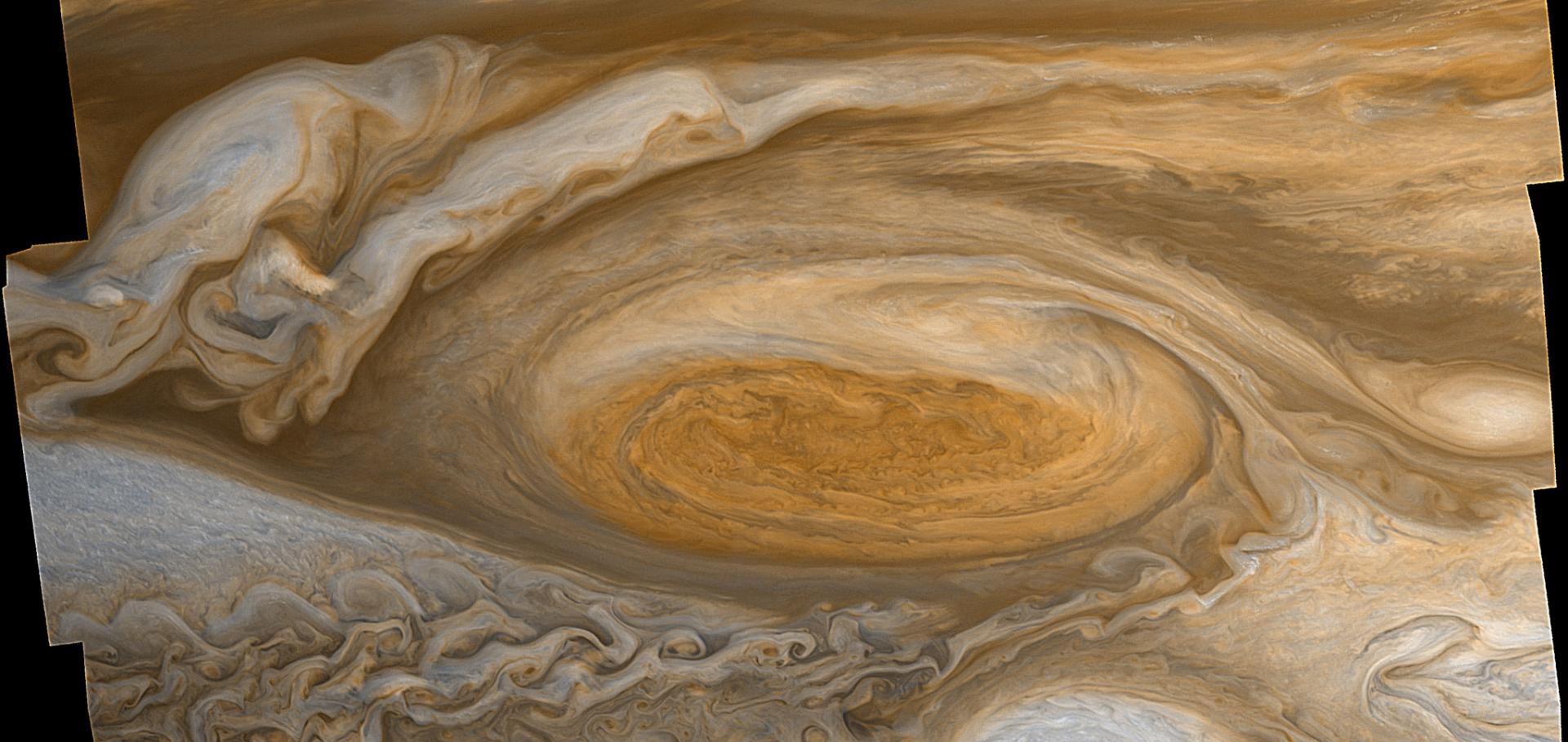Saturn's emitted power
Journal of Geophysical Research: Planets 115:11 (2010)
Abstract:
Long-term (2004-2009) on-orbit observations by Cassini Composite Infrared Spectrometer are analyzed to precisely measure Saturn's emitted power and its meridional distribution. Our evaluations suggest that the average global emitted power is 4.952 ± 0.035 W m-2 during the period of 2004-2009. The corresponding effective temperature is 96.67 ± 0.17 K. The emitted power is 16.6% higher in the Southern Hemisphere than in the Northern Hemisphere. From 2005 to 2009, the global mean emitted power and effective temperature decreased by ∼2% and ∼0.5%, respectively. Our study further reveals the interannual variability of emitted power and effective temperature between the epoch of Voyager (∼1 Saturn year ago) and the current epoch of Cassini, suggesting changes in the cloud opacity from year to year on Saturn. The seasonal and interannual variability of emitted power implies that the energy balance and internal heat are also varying. Copyright © 2010 by the American Geophysical Union.Structure and dynamics of the Martian lower and middle atmosphere as observed by the Mars Climate Sounder: Seasonal variations in zonal mean temperature, dust, and water ice aerosols
Journal of Geophysical Research: Planets 115:12 (2010)
Abstract:
The first Martian year and a half of observations by the Mars Climate Sounder aboard the Mars Reconnaissance Orbiter has revealed new details of the thermal structure and distributions of dust and water ice in the atmosphere. The Martian atmosphere is shown in the observations by the Mars Climate Sounder to vary seasonally between two modes: a symmetrical equinoctial structure with middle atmosphere polar warming and a solstitial structure with an intense middle atmosphere polar warming overlying a deep winter polar vortex. The dust distribution, in particular, is more complex than appreciated before the advent of these high (∼5 km) vertical resolution observations, which extend from near the surface to above 80 km and yield 13 dayside and 13 nightside pole-to-pole cross sections each day. Among the new features noted is a persistent maximum in dust mass mixing ratio at 15-25 km above the surface (at least on the nightside) during northern spring and summer. The water ice distribution is very sensitive to the diurnal and seasonal variation of temperature and is a good tracer of the vertically propagating tide. Copyright 2010 by the American Geophysical Union.Synchronization in climate dynamics and other extended systems
Understanding Complex Systems 2010 (2010) 153-176
Abstract:
Synchronization is now well established as representing coherent behaviour between two or more otherwise autonomous nonlinear systems subject to some degree of coupling. Such behaviour has mainly been studied to date, however, in relatively low-dimensional discrete systems or networks. But the possibility of similar kinds of behaviour in continuous or extended spatiotemporal systems has many potential practical implications, especially in various areas of geophysics. We review here a range of cyclically varying phenomena within the Earth's climate system for which there may be some evidence or indication of the possibility of synchronized behaviour, albeit perhaps imperfect or highly intermittent. The exploitation of this approach is still at a relatively early stage within climate science and dynamics, in which the climate system is regarded as a hierarchy of many coupled sub-systems with complex nonlinear feedbacks and forcings. The possibility of synchronization between climate oscillations (global or local) and a predictable external forcing raises important questions of how models of such phenomena can be validated and verified, since the resulting response may be relatively insensitive to the details of the model being synchronized. The use of laboratory analogues may therefore have an important role to play in the study of natural systems that can only be observed and for which controlled experiments are impossible. We go on to demonstrate that synchronization can be observed in the laboratory, even in weakly coupled fluid dynamical systems that may serve as direct analogues of the behaviour of major components of the Earth's climate system. The potential implications and observability of these effects in the long-term climate variability of the Earth is further discussed. © 2010 Springer-Verlag Berlin Heidelberg.A bulk cloud parameterization in a Venus General Circulation Model
ICARUS 206:2 (2010) 662-668
Assessing atmospheric predictability on Mars using numerical weather prediction and data assimilation
QUARTERLY JOURNAL OF THE ROYAL METEOROLOGICAL SOCIETY 136:651 (2010) 1614-1635


